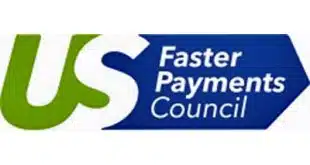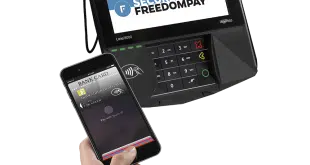Welcome to the murky world of bank card network fees, on which Visa and Mastercard make handsome livings. The fees reward investors, but what about acquirers and card issuers?
Mastercard Inc. and Visa Inc. have become two of the most beloved companies on Wall Street since their initial public offerings in 2006 and 2008, respectively. Buy their shares, and you’ve got as much assurance as the stock market can give that you’ll get your money back, and then some.
The five-year average annual trailing return on Visa’s shares has been 26.14% versus 14.72% for the Standard & Poor’s 500 index, according to Morningstar Inc., a Chicago-based investment-research firm. Mastercard’s five-year return is only slightly lower at 25.99%. Shorter-term results for both networks are even better.
Driving these stellar returns are enviable profit margins. For the quarter ending June 30, Visa’s margin, defined as net income divided by net revenues, was 45%, and Mastercard’s was 39%. And so-called operating margins for both companies are even higher.
Behind these high margins is a plethora of transaction fees and volume-based assessments or service charges, which have more or less quietly multiplied over the years. For purposes here, all such charges are referred to as fees.
The networks charge fees both to merchant acquirers, which pass them on to their merchant clients, and to credit and debit card issuers. The fees compensate the networks for switching transactions and other services they perform for both sides of the payment card market.
Fee income rises as transactions rise, of course. But as revenues increase, so do questions about pricing and the allocation of fees. What is the right balance, and is the current merchant-issuer split fair to both sides?
The answers to those questions are elusive. While the networks report total fee and assessments income every quarter, they keep secret details about exactly how much comes from acquirers and how much from issuers. Neither Visa nor Mastercard would talk to Digital Transactions for this story.
Making the picture more complicated are the revenues the networks get from digital services, consulting, risk-management, data analysis, and other newer services aside from transaction-related revenues.
Issuers and acquirers can recoup some of the fees they pay to Visa and Mastercard in the form of rebates and incentives. Each company will reward qualifying issuers for pumping out new cards with their brand, or renewing existing agreements. The cards, of course, will generate transactions for their respective networks. The networks also will reward acquirers for routing debit card transactions their way. These rebate and incentive costs are now surpassing $1 billion each quarter for both Mastercard and Visa.
Fees by the ‘Dozens’
Network fees merchants pay are separate from processor markups and interchange, the latter of which is the transaction-based fee set by the network but paid by acquirers to issuers. Interchange traditionally has been the biggest component of a merchant’s card-acceptance expenses; for a small merchant, 75% or so of such costs may come from interchange.
But network fees are getting more attention these days, in part because they’re such important revenue streams for Visa and Mastercard now that both are publicly traded companies rather than bank-owned associations as they were in their pre-IPO days. Plus, there is a growing sense that fees are rising, especially on the merchant side.
“My perception is, and I say this with strong confidence … yes, the network fees that they [merchants] pay are increasing,” says payments consultant and former GE Capital and Visa executive Eric Grover, principal of Minden, Nev.-based Intrepid Ventures.
In fact, the percentage of revenues the networks get from merchants “is going up rather dramatically,” he says.
As an example, Grover says cross-border transaction fees charged by both Visa and Mastercard to acquirers have gone up by 200% since their IPOs. In contrast, cross-border fees for issuers have been flat, he says.
Industry analyst Larry Berlin, a vice president at Chicago-based First Analysis Securities Corp., estimates acquirers pay about 55% of network fees and issuers 45%. He doesn’t believe the acquirer share has changed all that much in the past few years, but says “the amount of fees that are being paid out to process the transaction are increasing.”
At the same time, however, the networks are offering more services to their former owners, now financial-institution customers, including tokenization and risk-control services, Berlin notes. “There are so many more pieces to the pie,” he says. “[Merchants] also get a huge amount of the benefit.”
Yet another mystery about the networks’ top lines is the total number of fees. “I’d say there are dozens and dozens,” says Berlin. But other sources say they add up to the hundreds.
Some fees are obscure and applicable only in certain situations. And some can be extremely controversial, such as Visa’s Fixed Acquirer Network Fee (FANF). Initiated five years ago, the fee rewards merchant acquirers with lower pricing for sending more transaction volume Visa’s way (“What’s This FANF Thing All About?” September, 2012).
But some merchants called it an access fee for using the Visa network, and pointed out that the more locations a merchant has, the more it pays.
Not all observers agree network fees are on the rise. Another analyst who follows the card industry, Warren Fisher, founder and chief executive of Manole Capital Management in Tampa, Fla., says that in general, fee increases in the past three or four years have leveled off.
“If you were to go back five to 10 years and look at every earnings call by Mastercard and Visa, much of the upside came from pricing activity,” he says.
‘A Very Real Threat’
One reason for the perception by many in the payments industry that U.S. merchants pay more network fees than issuers is that retailers have little choice but to accept Visa and Mastercard cards nowadays, which makes it hard for all but the biggest merchants to negotiate fees with the two.
Combined, some 5.5 billion cards worldwide carry the two networks’ logos, and they account for about 75% of U.S. general-purpose card payments. Unlike the early days of card payments, the two leaders really don’t have to compete for merchants’ business.
By contrast, the U.S. card-issuing market, though much more concentrated that it was in the early 1990s, is still intensely competitive, and the loss of a big issuer could dent a network’s market share. And issuers at times do indeed change brands. Last year long-time Mastercard stalwart USAA Federal Savings Bank, reportedly Mastercard’s biggest debit issuer, switched both its debit and credit cards to Visa.
Mastercard has had wins, too. The company said in July that the cobranded credit card for supermarket leader The Kroger Co. would switch to the Mastercard brand from Visa. The card remains issued by Minneapolis-based U.S. Bancorp, a mostly Visa issuer.
“The merchants can’t fire Visa or Mastercard, [but] the issuers can fire them,” says Thomas McCrohan, managing director, Americas research, at Mizuho Securities USA LLC in New York City.
Adds Grover of Intrepid Ventures: “Big issuers can shift payment share. If any big issuer decided to switch its debit affiliation, they wouldn’t lose any customers. That’s a very real and credible threat to the networks.”
The need to minimize that threat is one reason Visa and Mastercard are on track to spend upwards of $9 billion globally this year on rebates and incentives. Issuers, however, almost never mention that incentives from a network had anything to do with a brand change.
“They both compete aggressively,” says Grover, noting that Mastercard started spending heavily on incentives because historically it has been the No. 2 network and, like car-rental agency Avis in its battle with market leader Hertz, has had to try harder. “That culture has stuck,” he says, adding that “Visa often acts as if it owns the market.”
At Mastercard’s July second-quarter earnings conference call with analysts, chief financial officer Martina Hund-Mejean noted that the differences in some assessments and fees charged and first-quarter volumes “were mainly due to pricing, which was essentially offset in rebates and incentives as well as some [payment] mix. This continues to be the case this quarter,” according to a SeekingAlpha.com transcript.
Adjusted for currency fluctuations, Mastercard’s rebate and incentive expense rose 22% year-over-year in the second quarter to $1.38 billion.
Small issuers, however, see little in the form of network incentives coming their way. Take the three-branch, employee-owned Bridge Community Bank in Mechanicsville, Iowa, issuer of 3,000 Visa-branded debit cards. (The bank’s credit cards come from ICBA Bancard’s TCM Bank N.A., which owns the receivables. ICBA Bancard is the processing service of the Independent Community Bankers of America.)
“My Visa fees keep going up,” says Bridge chief executive Bob Steen. “We don’t have the scale to take advantage of their volume incentives. It’s just a volume business.”
Considerable Upside
Certainly issuers, acquirers, and merchants want to do everything they can to reduce their expenses. But for most merchants, network fees still aren’t high enough to generate a huge outcry, some observers say.
Apart from the occasional fee that attracts widespread attention, such as Visa’s FANF, interchange still catches most of the flak. And most of the complaints come from the largest retailers, notes Fisher of Manole Capital Management.
“The vast majority of merchants, especially SMBs [small and mid-sized businesses], don’t look at what the cost is to accept credit,” he says.
Fisher predicts that revenues from network fees still have considerable upside, in part because both Visa and Mastercard now get most of their purchase volume outside the mature U.S. market. Cash still dominates payments in many countries, which means big opportunities for revenue-generating card transactions.
“The secular growth is still there,” he says.




